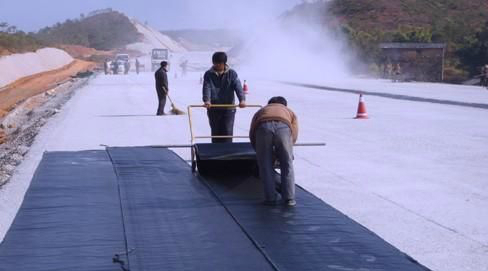**and flexible waterproof

I. Rigid waterproof
Rigid waterproof material refers to materials which use cement, sand and gravel as raw materials, or mix with a small amount of external additives, high polymer and other materials, by adjusting the mix ratio, inhibit or reduce the porosity, change the pore characteristics, increase the compactness between the interface of raw materials and other methods, formulate cement mortar concrete waterproof material with a certain degree of anti-penetration property. Rigid waterproof materials can be divided into two categories according to different cementitious materials. One is based on Portland cement, added with inorganic or organic additives to formulate waterproofing mortar and waterproof concrete, such as plus gas waterproof concrete, polymer mortar, etc.; the other is waterproof mortar and waterproof concrete made of special cement based on expansive cement raw material , such as expansion cement waterproof concrete.
(A) The rigid waterproof material has the following characteristics:
1. It has a high compressive strength, tensile strength and a certain resistance to penetration. It is a versatile material that can be waterproof and as a load-bearing and enclosure structure.
2. Different methods can be used depending on the location of the different engineering structures.
(1) The project structure itself adopts waterproof concrete to combine the structural load-bearing and waterproof functions.
(2) On the surface of structural layer , add thin layer reinforced concrete , Cement mortar surface added with waterproof gent , with high-molecular polymer to improve its waterproof and crack resistance.
(3) The surface of underground buildings and the surfaces of water storage and water conveyance structures shall be pasted and pressed with cement paste and cement mortar by layers.
(4) The roof can be laid with reinforced fine stone concrete, pre-stressed concrete and compensated shrinkage concrete. The joints or grid seams are filled with flexible sealing materials to form a roof with a rigid overall waterproof system.
II. Flexible waterproof
(A) Flexible Waterproof:
The main flexible waterproof material are mainly coils and linoleum. At present, the better choice is the polymer waterproof membrane, the next one is modified asphalt felt, and the paper tire felt has been phased out, and should not be reused.
(B) Waterproof coating:
Waterproof coating is currently the most important form of indoor decoration waterproof, polyurethane and acrylic emulsion waterproof coating, rubber modified asphalt waterproof coating are currently better choices. Nowadays, the main material of the project are two-component non-tar polyurethane (911) waterproof coating and one-component acrylic waterproof coating.
(C) The general practice of waterproofing is:
Level the original ground with cement mortar, after it’s dry (referring to not wet), evenly brush 3 times with dual-combination polyurethane waterproof coating or deal with modified asphalt and glass fiber cloth to do two oil and one cloth treatment. The wall surface of the bathroom shall be 1.2-1.5m high, the kitchen shall be no less than 0.5m high, and balcony is according to the height of the sill outside the balcony. After drying, water storage for 24 hours to do closed water blocking experiment, and ground construction could be performed if it’s confirmed without leakage. Some recently completed buildings also need to do closed water blocking experiment to test whether there is leakage of the building before the construction of the ground. If the floor or wall of the original room is damaged, waterproofing and water-tight closing tests must be conducted.
(D) Scope of application:
Membrane is generally suitable for roofing, or underground works facing the water surface;
Coatings are generally applied to the main surface of the structure.
(E) Price:
The price of coils is generally low.
(F) Performance characteristics:
The coils have good flexibility, corrosion resistance, etc. They have a wide range of applications. They are still the first one in China. Coatings and coils are all flexible materials. Its advantages are convenient construction and good waterproof performance, with certain degree of flexibility; in addition to the bathroom or other indoor places, it is not recommended that the membrane be applied to a large area in addition to indoor small room, because the node processing is not as good as the coating.
III. Summary
Both first and second grade require two or more layers waterproofs, all of which are combined rigid and flexible waterproof together. Coatings and membranes are all flexible waterproof; therefore, they cannot be used independently in First and second grade. L Level 3 and 4 waterproofs are low levels, one or two layer waterproofs are ok.
(Source: Waterproof Corporate Club)





